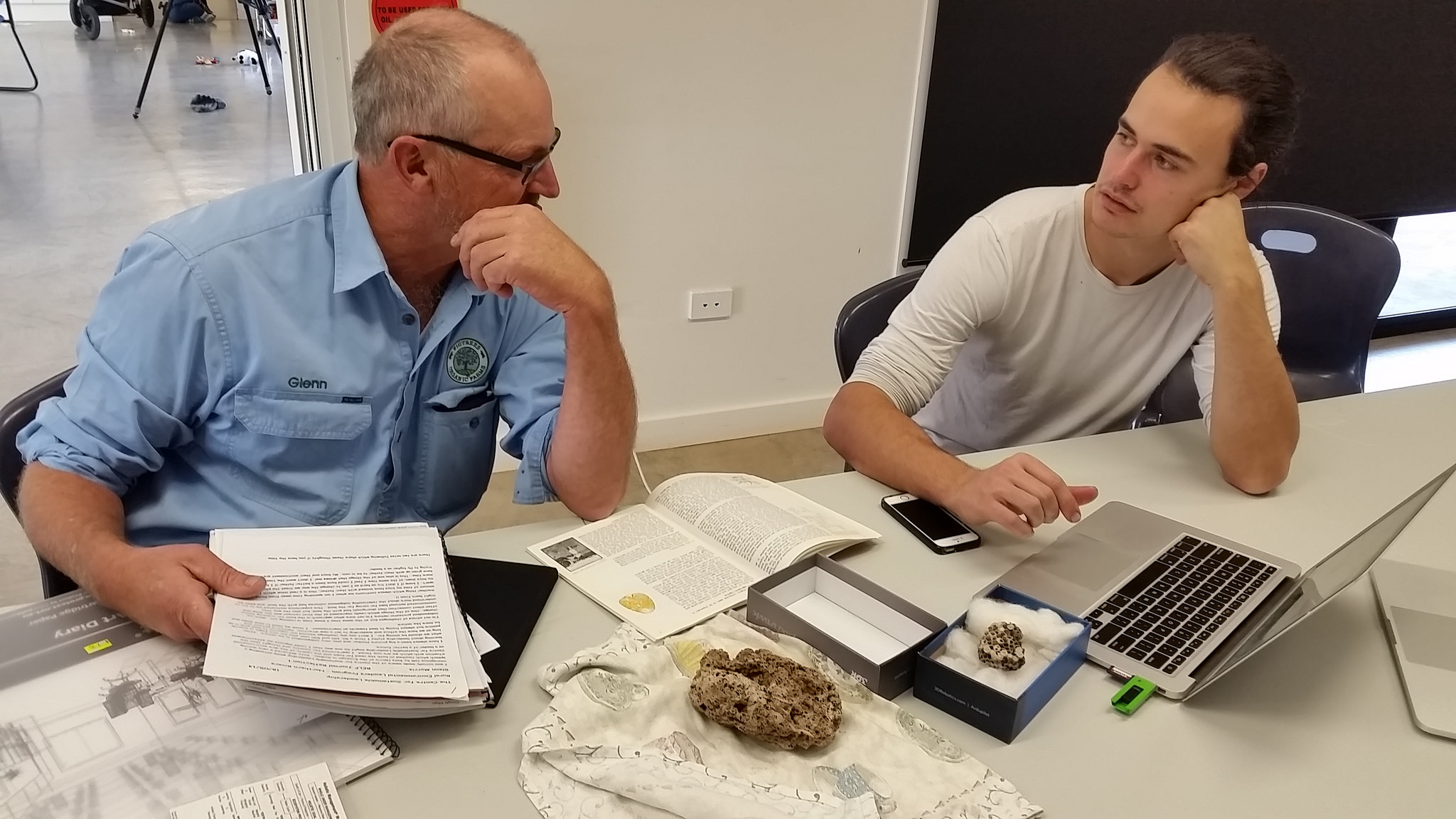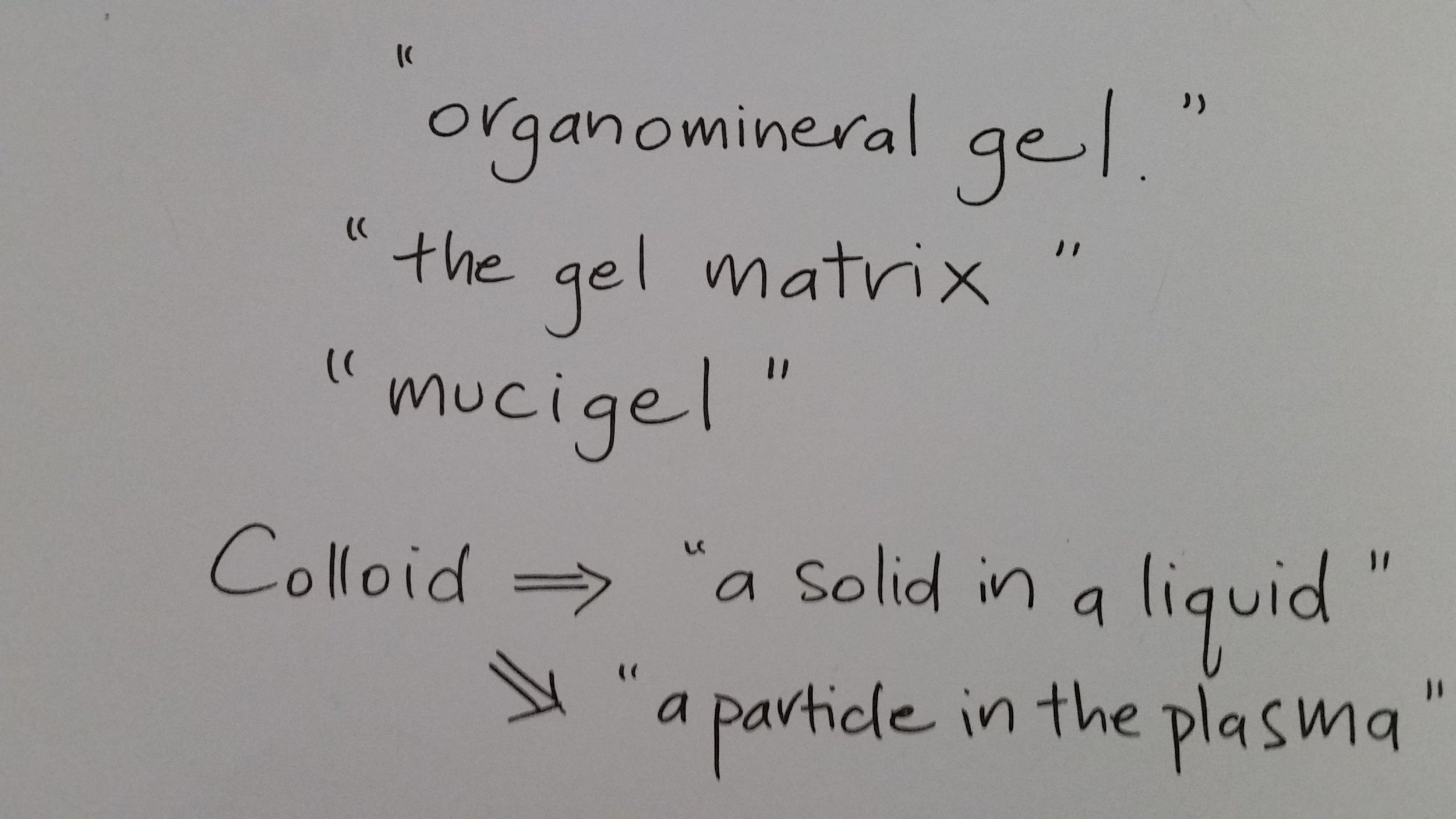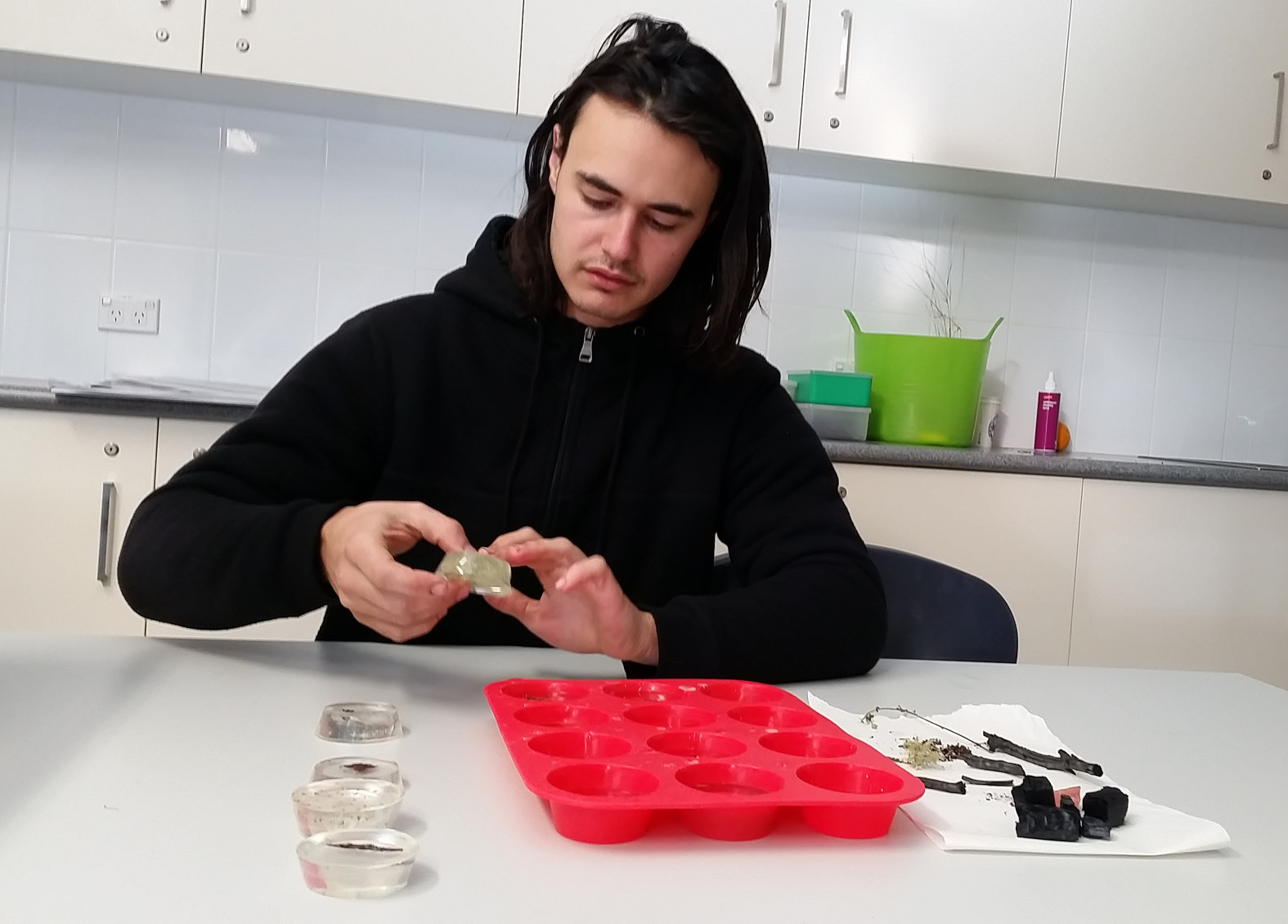By Laura Fisher
During the long drive to Bingara for our first residency, Jono and I chatted plenty about soil and humus, but we were aware that without Glenn in the conversation we only half knew what we were talking about. We quickly discovered that the point of our residency was not to try to make things, but to spend time talking and imagining together. On our second day, Glenn joined us at The Living Classroom and we had the luxury of many hours burrowing into the properties and functions of humus. Glenn showed us some of the scientific writings and diagrams he’d gathered over the years, a lot of which predate the industrial agriculture era. Far from being dry and technical, we found phrases like: “as we gaze in wonder at this slow majestic exploration of the soil…” .
Treating scientists, farmers and artists as if they are starkly different characters is making less and less sense to us - but that’s a discussion for another day!
Glenn knows a million things about humus, but still respects it as an enigmatic force of nature that will always elude scientific scrutiny. This made our brainstorming immensely stimulating, because even though Jono and I are students and Glenn is the teacher, we are all digging deep in a creative way to figure out how to manifest humus: as a medium, as an environment, and as a process.
One thing that got us very excited was the revelation that humus has a gelatinous structure. It strikes me as such a paradoxical idea: something jellyish can also be structural. I can’t help but be reminded of a movie I once saw...
Glenn used some very evocative words like “gel matrix” and “organomineral gel”. Something I still find bewildering is that humus “coats” the inorganic elements in the soil, which include clay, sand and silt. In doing this it makes the soil “behave like humus”. We inspected this microscopy image, from a 1978 CSIRO publication, which shows how the gel is porous, honeycomb-like, and does indeed coats all sorts of things:
This comes from a book published by the CSIRO called "Organic matter and soils", by Kevin Handreck, in 1978.
The inscription next to the image says:
Between the young plant root (R) and the soil (S) is the mucigel (M) that surrounds the root and enhances its contact with the soil. Bacteria (B) thrive on nutrients exuding from the root. Individual clay mineral particles are marked (C). Magnification: x 3850.
How extraordinary. We resolved to cook up a stack of jelly to play around with and embed things in it. Maybe some silicon too… And in planning our installation we had visions of jelly walls, jelly caves and other outlandish things…
To add more dimension to this materials speculation, Glenn explained that humus is a colloidal substance - another mind-bending concept. Colloid means “a solid in a liquid”, where that solid is very very small. In fact, if you’re a particle, you’re only a colloid of you’re less than 0.001mm in size. Other colloidal substances are blood, milk and mayonnaise. We couldn’t really be further from the substances most of us would associate with “dirt”. The word Glenn uses a lot is “plasma”. “The whole of the earth was once covered in a layer of plasma, just think about it” he says. Bloody oath.
With all this seeping between our synapses, the following day Jono and I visited Glenn’s farm Billabong. We were on a humus hunt.
Feeling very zen in the forest
Aiming for undisturbed ground, Glenn took us to a magical area of bushland surrounding a creek. He dug up some humus from beneath a magnificent Yellow Box.
Glenn held the humus very tenderly, prodding it gently to show us how it held together. Given that the region is in drought, it was a piece of earth in remarkably good shape. Which proves the point: if soil contains humus, it retains its structure through the dryer periods, rather than falling apart to dust.
We could see that the humus had a ‘bag-of-peas’ structure and recognised its gelatinous quality. We could also see the tiny filaments of mycelium distributed throughout. We collected some to take with us, and later experimented with its water holding capacity and submerged some in resin for safe keeping. Actually, we put a lot of things in resin on this residency. Resin is proving to be a very seductive for the artist-scientist in us...
Glenn is keen for us to understand that even in good soils, humus is not a given. It takes time for it to colonise and rejuvenate soils. It might only exist in little pockets. Another delightful word Jono and I learnt during our brainstorming session with Glenn was ‘flocule’. A flocule is a cluster of colloid. Irresistibly, there was a fair bit of
‘what the flock?’
‘flocking hell’
‘get flocked’
and so on.
Stop flocking around with that spade Glenn
To achieve “rehumification” in the soil on a farm, let’s be blunt: you can’t be spraying chemicals (herbicides, fungicides, insecticides), and you can’t be tilling or ploughing. There’s a reason “humus” is part of the lexicon of forest ecology, but has all but disappeared from agricultural textbooks. But Glenn now knows how to “rehumify” the working landscape of the farm through regenerative techniques. Here we get to some really toothy biochemical stuff, which I’ll have to save for another blog post. But here’s what Glenn has to say:
“A feature of humus to consider is that along its journey from organic matter and exudates it goes through many phases (exudates are the soluble substances that “exude” from the plant roots, containing sugars, amino acids and other things that feed soil microbes and protect the roots from pests). So we have broken down organic matter forming humic matter, which then goes through further breakdown to form the very dark brown humus plasma distributed throughout the soil. THEN we have what is known as stable humus which is where the clay and colloidal humus wrap around each other with the aid of cations (calcium), effectively forming structures which are resistant to microbial attack. This formation of stable humus is important in the carbon sequestration space. The sample we got from the forest would be in the humus/humic matter category.”
So. Back to the gel matrix. And the jelly cave. I reckon I finally understand one of the fundamentals of humus. I certainly don’t have my head around how it comes into being, but I do have more of a grip on how functions. It goes like this:
We all know that organic matter is decaying, being “consumed” by worms, insects and microbes constantly. And we know that healthy soil “holds” water like a sponge, and remains oxygenated (aerobic rather than anaerobic. If you’ve encountered disgustingly smelly sludge in your compost or worm farm, you’ve seen what anaerobic matter looks like). If we think about these two processes together we hit a conundrum: how can a material that is constantly decomposing also be a stable container for water and oxygen molecules, which support plants, year in year out?? What stops it from just being a turbulent, dissolving, fragmenting mess? The answer lies in this porous, honeycombish material of gel-like consistency: humus.
From the highest point at Billabong farm. The story glimpsed in this image is that Billabong retains full grass cover during the drought, whereas in many of the farms in the distance we're seeing raw earth.
You can read the other humus:human blogs here



















